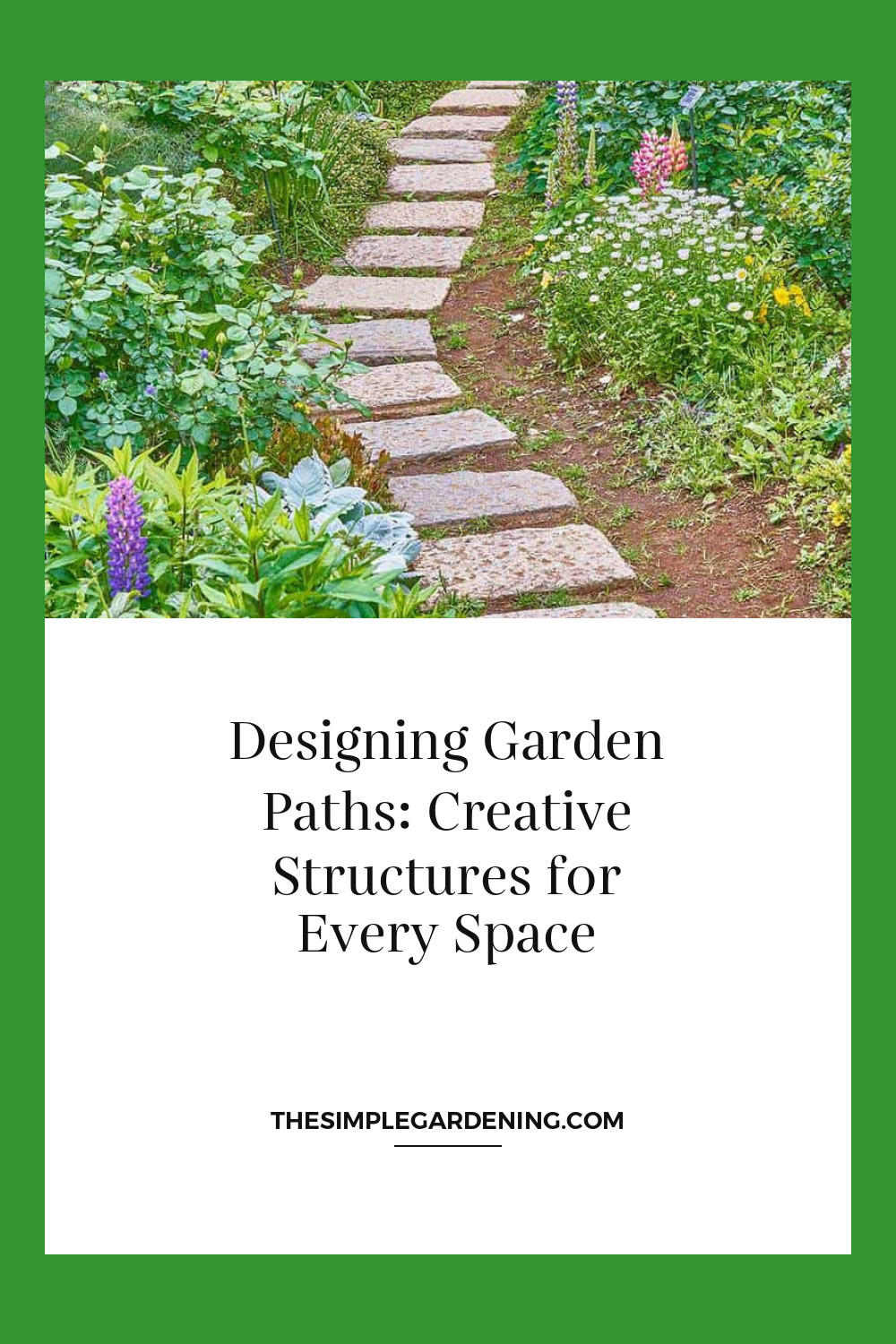Garden pathways are more than just functional routes through your outdoor space; they’re essential elements that can significantly enhance the overall design and ambiance of your garden. In this article, we’ll delve into the art of designing garden paths, exploring various materials, styles, and creative ideas to elevate your outdoor space to new heights of beauty and functionality.
Defining the Role of Garden Pathways in Garden Design
Garden pathways play a crucial role in garden design, serving as both practical and aesthetic features. They provide guidance for visitors, leading them through the garden and highlighting its key features. Moreover, pathways create rhythm and flow within the landscape, contributing to its overall coherence and beauty.
| Points |
|---|
| Guidance for Visitors |
| Rhythm and Flow |
| Highlighting Key Features |
Pathways serve as visual cues, directing attention to specific areas of interest such as focal points, flower beds, or architectural elements. By strategically placing pathways, you can influence how visitors experience and perceive your garden, guiding their journey and framing their views.

Source Image: gardentabs.com
Importance of Pathways in Enhancing Accessibility and Aesthetics
Accessibility is a crucial consideration in garden design, especially for individuals with mobility issues or disabilities. Well-designed pathways ensure that everyone can navigate the garden comfortably and safely, regardless of physical limitations.
At the same time, pathways contribute to the overall aesthetics of the garden, adding structure, texture, and visual interest. Whether formal or informal, pathways serve as design elements that complement the surrounding landscape, enhancing its beauty and charm.
| Points |
|---|
| Accessibility for All |
| Structural Elements |
| Texture and Visual Interest |
A well-designed pathway can transform a mundane garden into a captivating oasis, inviting exploration and discovery. By carefully selecting materials, layouts, and embellishments, you can create pathways that are not only functional but also visually stunning, adding a touch of magic to your outdoor space.
Pathway Materials
The choice of materials plays a significant role in determining the aesthetics, durability, and maintenance requirements of garden pathways. Here, we’ll explore some popular options for constructing pathways, from traditional to contemporary.
| Material | Description | Pros | Cons |
|---|---|---|---|
| Gravel | Affordable and versatile, gravel pathways offer a rustic charm and excellent drainage. | – Cost-effective – Easy to install – Permeable surface allows water to infiltrate | – Requires periodic replenishment – Can be challenging to walk on for some individuals |
| Stone | Natural stone pathways exude timeless elegance and durability, with a wide range of colors and textures available. | – Durable and long-lasting – Variety of shapes and sizes – Low maintenance | – Higher initial cost – Heavy and difficult to install |
| Brick | Brick pathways lend a classic, old-world charm to gardens, with uniform shapes and colors for a cohesive look. | – Timeless appeal – Easy to install in various patterns – Low maintenance | – Susceptible to shifting and settling – Limited color options |
| Wood | Wooden pathways add warmth and organic texture to garden landscapes, perfect for rustic or contemporary themes. | – Natural aesthetic – Easy to customize and install – Suitable for uneven terrain | – Prone to rot, decay, and insect damage – Requires regular sealing and maintenance |
Each material offers unique advantages and considerations, allowing you to choose the best option based on your aesthetic preferences, budget, and maintenance capabilities.

Source Image: drivewaywise.com
Formal Garden Paths
Formal garden pathways are characterized by their straight lines, symmetrical layouts, and geometric patterns, reflecting a sense of order, precision, and elegance. These pathways are often found in classical gardens, historical estates, and formal landscapes, where they serve as focal points and design elements.
| Points |
|---|
| Straight Lines and Symmetry |
| Geometric Patterns |
| Classical and Formal Aesthetics |
The symmetry and precision of formal pathways create a sense of harmony and balance within the garden, enhancing its overall aesthetic appeal. These pathways are typically constructed using durable materials such as stone, brick, or concrete, ensuring longevity and durability.
Historically, formal garden paths were designed to align with architectural features, such as buildings, fountains, or sculptures, creating visual axes and focal points. Today, formal pathways are often used to delineate different areas of the garden, such as parterres, lawns, or flower beds, adding structure and organization to the landscape.
Informal Garden Paths
In contrast to formal pathways, informal garden paths embrace a more relaxed, naturalistic aesthetic, characterized by curves, meanders, and irregular shapes. These pathways are inspired by the organic forms and patterns found in nature, creating a sense of whimsy, spontaneity, and discovery.
| Points |
|---|
| Curves and Meanders |
| Naturalistic Aesthetic |
| Whimsy and Spontaneity |
Informal pathways are often constructed using materials such as gravel, wood chips, or stepping stones, allowing for flexibility and creativity in design. These pathways may wind through lush foliage, meander around trees, or follow the contours of the landscape, inviting exploration and contemplation.
The irregular shapes and organic forms of informal pathways create visual interest and diversity within the garden, breaking up monotony and adding a sense of rhythm and movement. These pathways encourage visitors to wander and linger, fostering a deeper connection with the natural environment.
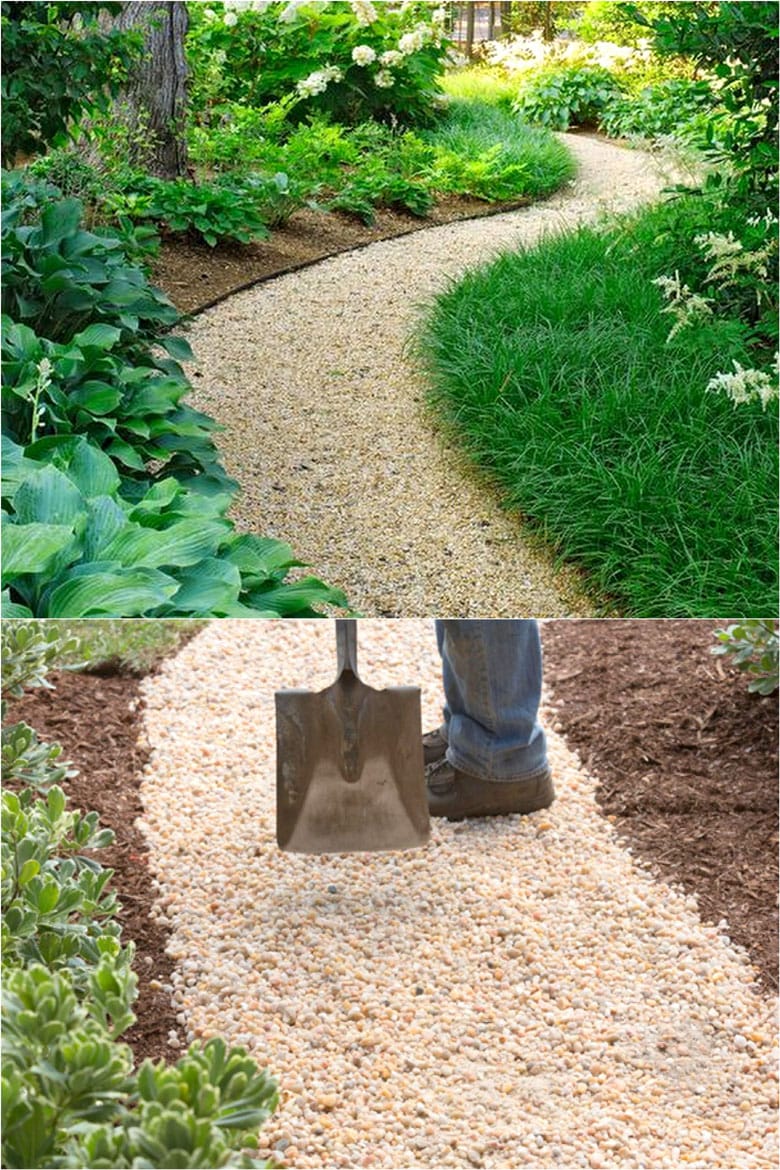
Source Image: www.apieceofrainbow.com
Stepping Stone Paths
Stepping stone pathways offer a charming and practical solution for navigating through gardens, especially in areas with uneven terrain or delicate vegetation. These pathways consist of flat stones set into the ground at regular intervals, creating a series of steps or platforms for walking.
| Points |
|---|
| Charming and Practical |
| Ideal for Uneven Terrain |
| Enhancing Garden Aesthetics |
Stepping stone paths can be customized to suit any garden style or theme, from formal to informal, rustic to contemporary. They can be arranged in straight lines, gentle curves, or irregular patterns, depending on the desired effect.
One of the key advantages of stepping stone paths is their versatility and adaptability to different garden layouts and topographies. They can be easily installed in areas where traditional pathways may be impractical or challenging, such as sloping terrain, rocky soil, or densely planted beds.
Gravel Paths
Gravel paths are a popular choice for garden pathways, offering a perfect blend of affordability, versatility, and aesthetics. These paths consist of loose gravel or crushed stone spread over a prepared base, providing a permeable surface for walking while allowing water to drain freely.
| Points |
|---|
| Affordable and Versatile |
| Excellent Drainage |
| Rustic Charm |
Gravel paths are easy to install and maintain, making them ideal for DIY enthusiasts and budget-conscious gardeners. They can be customized with various types and colors of gravel, from smooth pebbles to crushed granite, to create unique patterns and textures.
One of the key considerations when designing gravel paths is selecting the right type and size of gravel for the desired aesthetic and functional requirements. Fine gravel provides a smoother walking surface and a more formal look, while coarse gravel offers better drainage and a rustic appearance.
Paved Paths
Paved pathways offer durability, stability and a polished look to garden landscapes. These paths are constructed using solid materials such as concrete, asphalt, or interlocking pavers, providing a stable surface for walking and wheeling garden equipment or furniture.
| Material | Description | Pros | Cons |
|---|---|---|---|
| Concrete | Concrete paths are durable, long-lasting, and versatile, with the ability to be poured into any shape or size. | – Durable and long-lasting – Can be customized with colors, textures, and patterns – Low maintenance | – Prone to cracking and settling over time – Difficult to repair once damaged |
| Asphalt | Asphalt paths offer a smooth, seamless surface that is ideal for high-traffic areas and heavy loads. | – Smooth and durable surface – Cost-effective option for large pathways – Resistant to weather and wear | – Requires professional installation – Susceptible to cracking and potholes |
| Pavers | Interlocking concrete or stone pavers provide a visually appealing and customizable option for garden pathways. | – Variety of colors, shapes, and patterns available – Easy to install and repair – Permeable surface allows water to infiltrate | – Higher initial cost compared to concrete or asphalt – Requires regular maintenance to prevent weed growth |
Paved paths can be designed to complement any garden style or theme, from sleek and modern to rustic and traditional. They offer a clean, uniform look that enhances the overall aesthetic of the garden while providing a stable and accessible surface for walking.
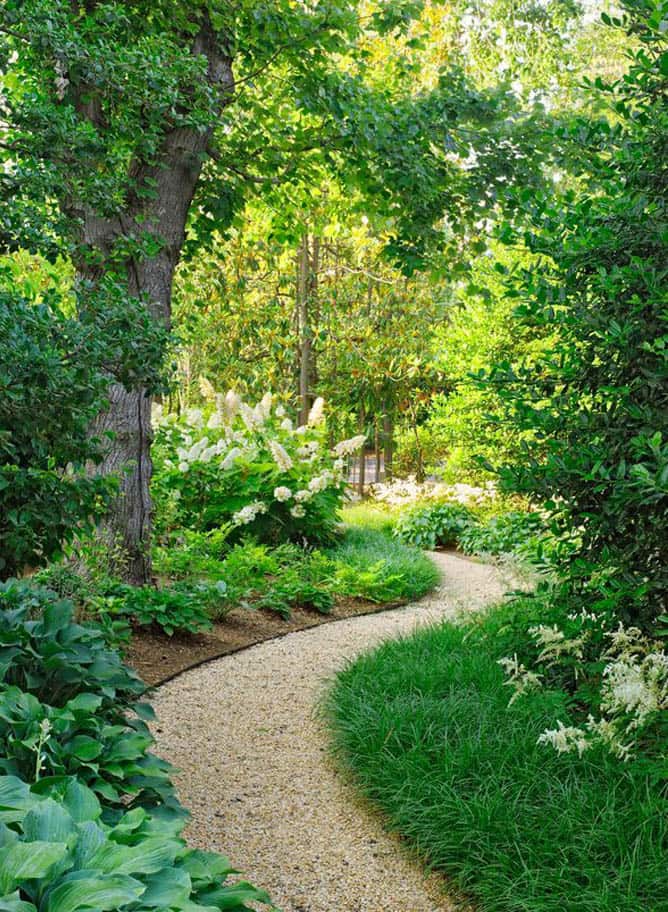
Source Image: www.apieceofrainbow.com
Garden Pathways
Wooden Pathways
Wooden pathways add warmth, texture, and natural beauty to garden landscapes, creating a charming and inviting ambiance. These paths are constructed using various types of wood, including cedar, redwood, and pressure-treated lumber, depending on the desired durability and aesthetics.
| Points |
|---|
| Warmth and Natural Beauty |
| Variety of Wood Options |
| Suitable for Uneven Terrain |
Wooden pathways are particularly well-suited for gardens with a rustic, organic, or coastal theme, where they blend seamlessly with the surrounding landscape. They can be built as raised boardwalks over wet or marshy areas, meandering through dense foliage or along the shoreline.
One of the key advantages of wooden pathways is their versatility and adaptability to different garden layouts and topographies. They can be easily customized to fit any space or shape, whether straight or curved, narrow or wide, providing a flexible solution for garden design.
Pathway Borders and Edging
Defining and delineating garden pathways with borders and edging adds structure, visual interest, and practicality to the landscape. Borders help to contain gravel, mulch, or paving materials, preventing them from spilling onto adjacent areas or becoming overgrown with weeds.
| Points |
|---|
| Containment and Definition |
| Visual Interest and Aesthetics |
| Practicality and Maintenance |
There are various options for pathway borders and edging, ranging from natural materials such as plants, stones, and wood to manufactured products such as metal, plastic, or concrete. Each option offers unique advantages and considerations in terms of aesthetics, durability, and ease of installation.
Natural borders, such as low-growing plants or ground covers, soften the edges of pathways and blend seamlessly with the surrounding landscape. They provide a naturalistic look that complements informal garden styles and allows for easy integration of planting beds or borders.
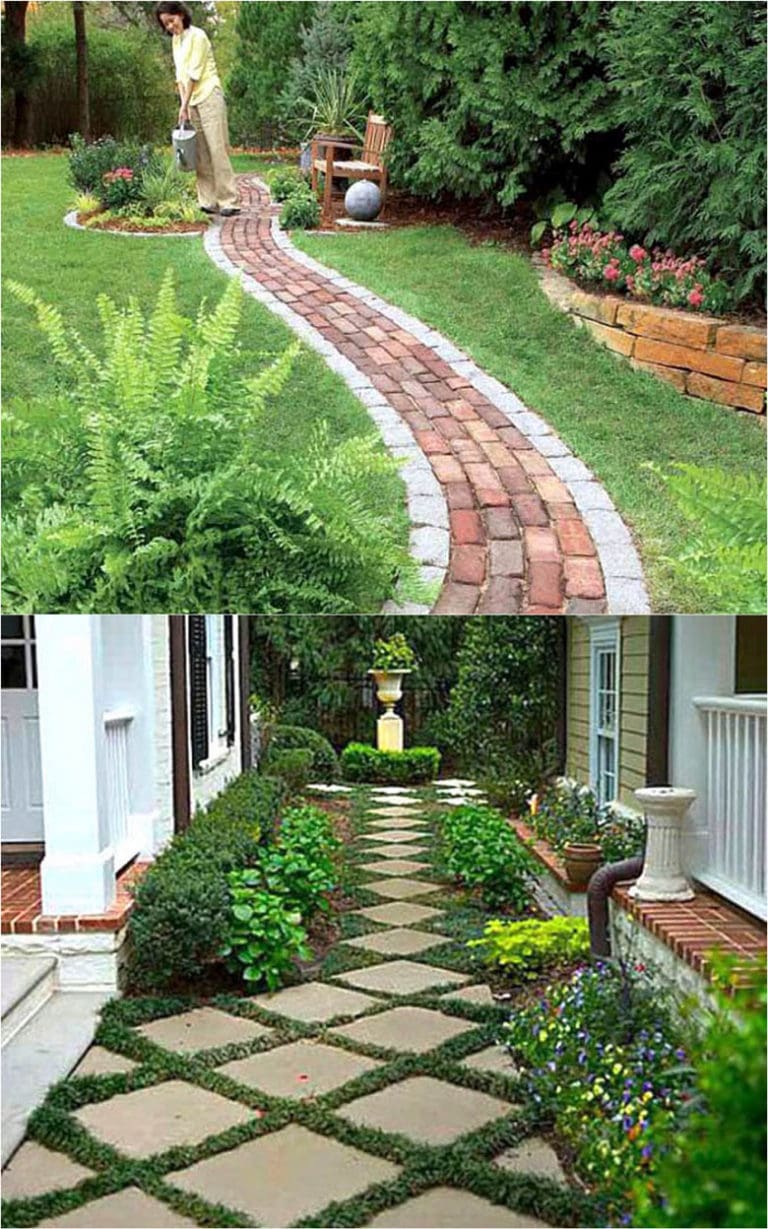
Source Image: www.apieceofrainbow.com
Pathway Lighting
Enhancing safety and ambiance with pathway lighting transforms your garden into a magical and inviting space, extending its usability well into the evening hours. Pathway lighting not only illuminates the way for visitors but also highlights key features, creates focal points, and adds drama to the landscape.
| Points |
|---|
| Safety and Security |
| Ambiance and Mood |
| Highlighting Key Features |
There are various types of lighting fixtures and techniques for illuminating garden pathways, from subtle ground-level lights to dramatic uplighting or downlighting effects. Solar-powered lights are an eco-friendly and cost-effective option for illuminating pathways without the need for electrical wiring or professional installation.
Pathway lighting can be used strategically to accentuate the architectural elements, plants, or sculptures along the path, creating a sense of drama and intrigue. It can also be integrated into the landscape design, hidden among plants or rocks to create a subtle and magical effect.
Garden Pathway Structures
Integrating structural elements such as arches, pergolas, and trellises into garden pathways adds vertical interest, architectural detail, and functional versatility to the landscape. These structures serve as focal points, framing views, providing shade, and supporting climbing plants or vines.
| Points |
|---|
| Vertical Interest and Architectural Detail |
| Functional Versatility |
| Shade and Support for Climbing Plants |
Arches and pergolas create dramatic entrances or transitions between different garden areas, while trellises offer support for climbing plants such as roses, jasmine, or clematis. These structures can be constructed from various materials, including wood, metal, or vinyl, depending on the desired aesthetics and durability.
Pathway structures can be designed to complement the overall style and theme of the garden, whether formal or informal, traditional or contemporary. They add depth, dimension, and visual interest to the landscape, transforming a simple pathway into a captivating journey through the garden.
Water Features Along Pathways
Incorporating water features such as fountains, ponds, and streams into garden pathways adds a sense of tranquility, movement, and sensory delight to the landscape. Water features create focal points, mask ambient noise, and attract wildlife, enhancing the overall ambiance and ecological diversity of the garden.
| Points |
|---|
| Tranquility and Serenity |
| Movement and Sound |
| Ecological Diversity |
Fountains provide a soothing soundtrack of cascading water, while ponds offer reflections of the surrounding landscape and support aquatic plants and wildlife. Streams meandering along pathways create dynamic visual interest and a sense of movement, inviting visitors to pause and linger by the water’s edge.
Water features can be integrated into the garden design in various ways, from formal geometric ponds to naturalistic streams or cascading waterfalls. They can be constructed from various materials, including stone, concrete, or prefabricated fiberglass, depending on the desired size, style, and budget.
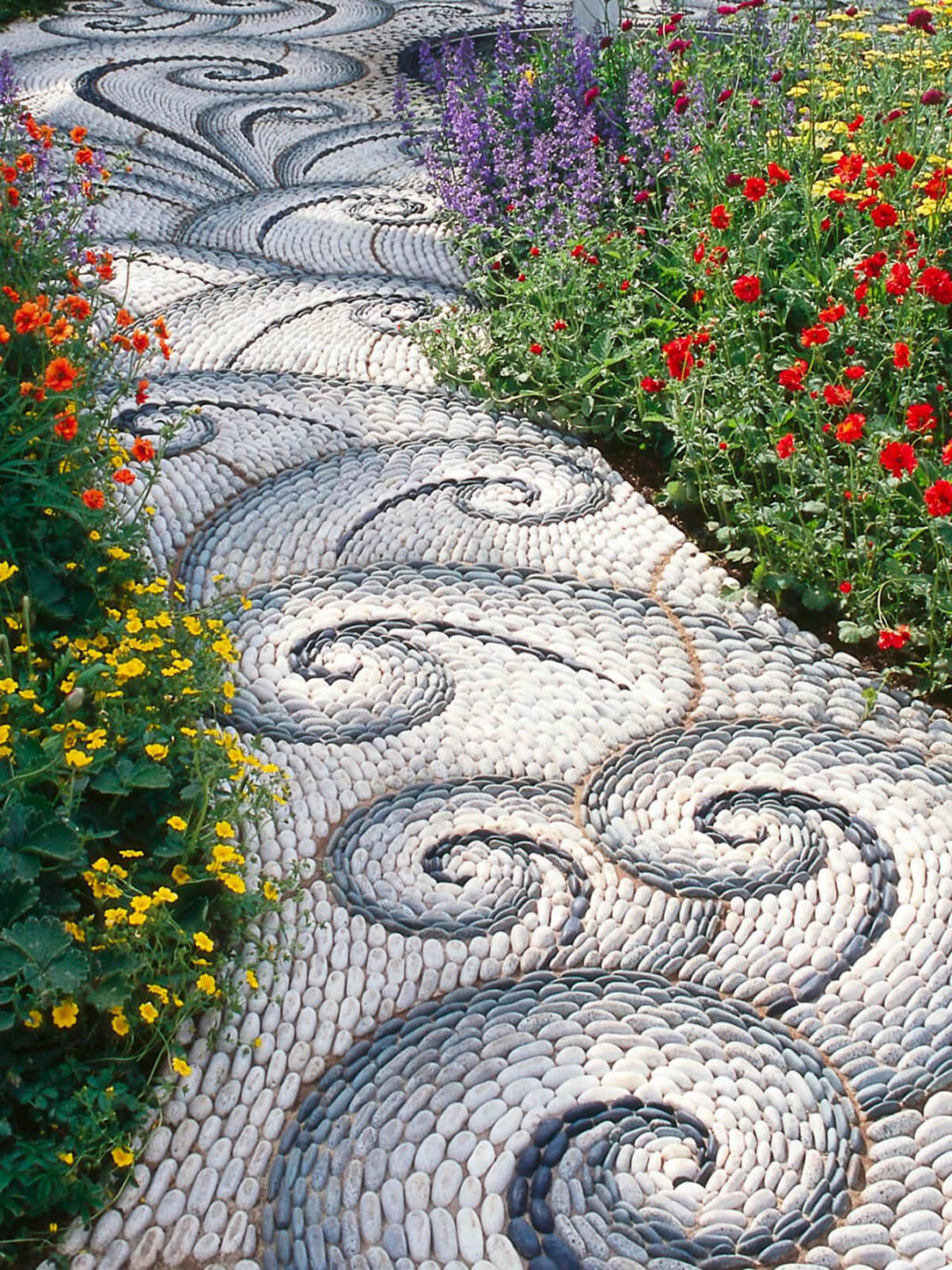
Source Image: thearcholic.com
Pathway Furniture and Rest Areas
Designing seating areas, gazebos, and other amenities along garden pathways creates inviting spaces for relaxation, contemplation, and socializing. These rest areas offer opportunities to pause, unwind, and appreciate the beauty of the garden while providing functional comfort and convenience for visitors.
| Points |
|---|
| Inviting Spaces for Relaxation |
| Functional Comfort and Convenience |
| Socializing and Enjoyment |
Pathway furniture such as benches, chairs, or hammocks can be strategically placed along the path to offer resting spots with views of the surrounding landscape. Gazebos or pergolas provide shaded retreats for reading, dining, or enjoying a quiet conversation with friends and family.
In addition to seating, pathway rest areas can include amenities such as water features, fire pits, or garden sculptures to enhance the sensory experience and create memorable moments for visitors. These spaces can be designed to reflect the overall style and theme of the garden, whether formal or informal, traditional or contemporary.
Pathway Maintenance
Maintaining garden pathways is essential to ensure their longevity, safety, and aesthetic appeal. Regular maintenance tasks such as cleaning, repairing, and weed control help preserve the integrity of pathways and prevent them from becoming overgrown, uneven, or hazardous.
| Tasks | Description |
|---|---|
| Cleaning | Remove debris, leaves, and organic matter from pathways to prevent slipping and tripping. |
| Repairing | Fix cracks, uneven surfaces, or loose paving stones to maintain a smooth and safe pathway. |
| Weed Control | Remove weeds and unwanted vegetation from pathway edges and joints to prevent them from encroaching on the path. |
Regular cleaning is essential to remove debris, leaves, and organic matter that can accumulate on pathways, making them slippery and hazardous, especially in wet or humid conditions. Sweeping or blowing the pathway surface regularly helps prevent the buildup of dirt and grime, keeping it clean and safe for walking.
Repairing damaged or worn pathways is necessary to maintain their structural integrity and safety. Cracks, uneven surfaces, or loose paving stones can create tripping hazards and detract from the overall appearance of the garden. Repairing these issues promptly ensures a smooth and stable surface for walking and enhances the aesthetic appeal of the pathway.
Weed control is crucial to prevent unwanted vegetation from encroaching on pathways and disrupting their appearance. Weeds can grow in the joints between paving stones or along the edges of the pathway, detracting from its neat and tidy appearance. Regular weeding helps keep pathways clear and defines their boundaries, enhancing the overall aesthetics of the garden.
Strategies for Preserving Pathway Integrity and Longevity
In addition to regular maintenance tasks, there are several strategies you can implement to preserve the integrity and longevity of garden pathways. These strategies focus on minimizing wear and tear, preventing damage, and ensuring that pathways remain safe, functional, and attractive for years to come.
| Strategies | Description |
|---|---|
| Proper Installation | Ensure pathways are properly installed with a solid base, adequate drainage, and appropriate materials. |
| Use of Quality Materials | Choose high-quality materials that are durable, weather-resistant, and suitable for the intended purpose. |
| Proper Drainage | Ensure pathways have proper drainage to prevent water buildup, erosion, and damage to paving materials. |
| Regular Inspection and Maintenance | Conduct regular inspections and maintenance to identify and address issues before they escalate. |
| Seasonal Care | Adjust maintenance tasks and strategies based on seasonal changes in weather, vegetation, and use. |
Proper installation is critical to the longevity and performance of garden pathways. Ensure that pathways are constructed with a solid base, adequate drainage, and appropriate materials to withstand foot traffic, weather exposure, and other environmental factors. Properly installed pathways are less prone to settling, shifting, or cracking, ensuring long-term stability and safety.
Choosing high-quality materials is essential for ensuring the durability and longevity of garden pathways. Opt for materials that are resistant to weathering, fading, and wear, such as natural stone, concrete pavers, or pressure-treated wood. Quality materials may require a higher initial investment but offer better performance and longevity in the long run.
Proper drainage is crucial for preventing water buildup, erosion, and damage to paving materials. Ensure that pathways are sloped away from buildings and other structures to channel water away effectively. Use permeable materials or incorporate drainage features such as French drains or gravel trenches to allow water to infiltrate into the soil and reduce runoff.
Regular inspection and maintenance are essential for identifying and addressing issues before they escalate into costly repairs. Conduct visual inspections of pathways periodically to check for signs of wear, damage, or deterioration. Address any issues promptly, such as cracks, uneven surfaces, or loose paving stones, to prevent further damage and ensure the safety and integrity of the pathway.
Adjust maintenance tasks and strategies based on seasonal changes in weather, vegetation, and use. For example, pathways may require more frequent cleaning and weed control during the growing season when vegetation is lush and active. Similarly, pathways may need to be inspected for damage or hazards after severe weather events such as storms or heavy rainfall. By adapting maintenance practices to seasonal conditions, you can ensure that pathways remain in optimal condition year-round.
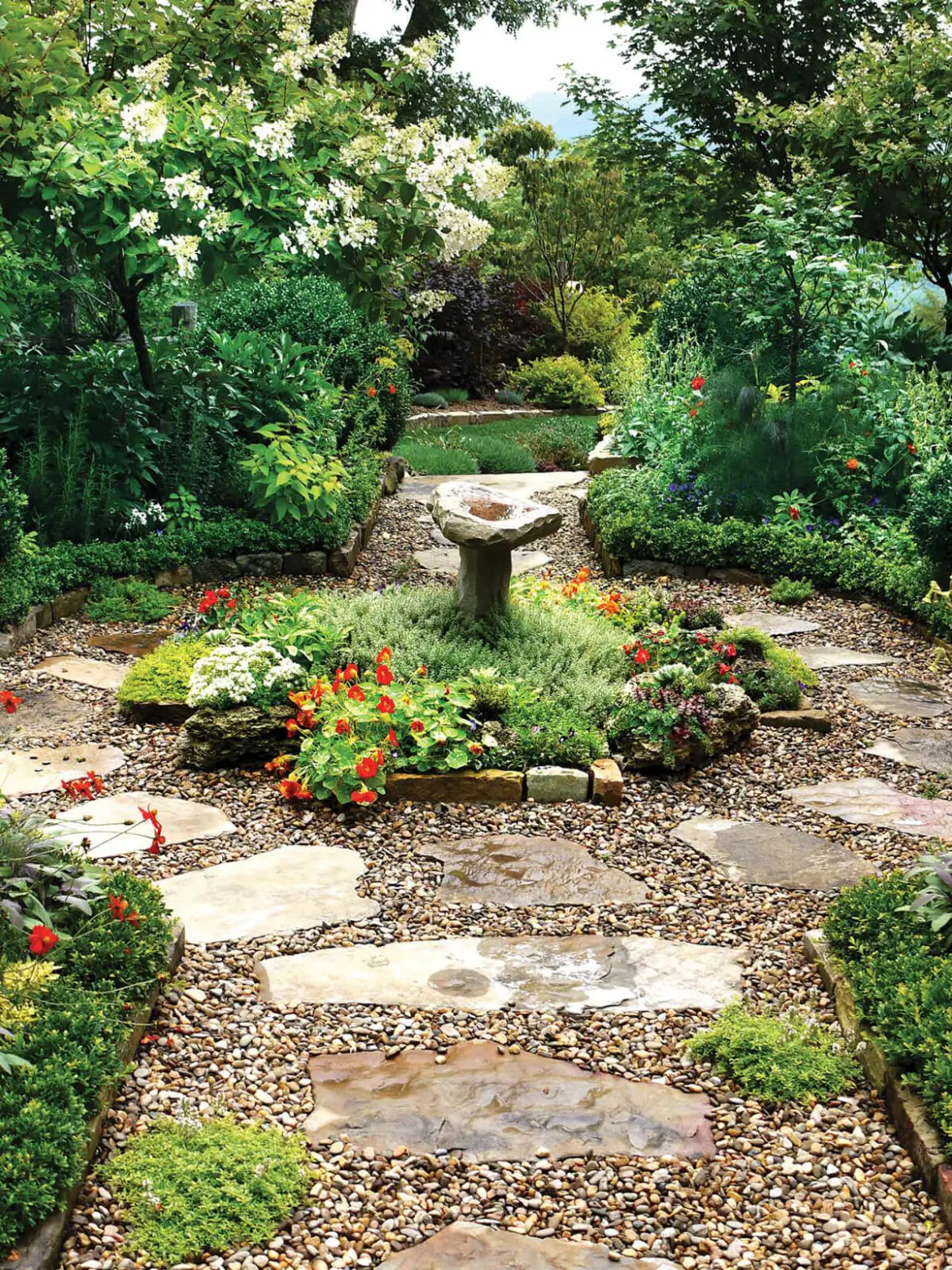
Source Image: talkdecor.com
Garden Pathways
Customizing Garden Pathways
Encouraging creativity and personalization in designing garden pathways allows you to tailor them to suit specific garden themes, styles, and user preferences. Customized pathways add character, charm, and individuality to the garden, reflecting your personality and vision for the outdoor space.
| Points |
|---|
| Creativity and Personalization |
| Character and Charm |
| Reflecting Your Personality |
There are countless ways to customize garden pathways, from choosing unique materials and layouts to incorporating decorative elements and artistic touches. Whether you prefer a formal, structured pathway or a whimsical, meandering trail, there are endless possibilities for creating a pathway that reflects your style and enhances the beauty of your garden.
One way to customize pathways is by selecting materials that complement the overall theme and aesthetic of the garden. For example, natural stone pathways are well-suited for rustic or traditional gardens, while sleek concrete or paver paths are perfect for modern or contemporary landscapes. You can also mix and match materials to create visual interest and texture, such as combining gravel with stepping stones or brick with wood.
In addition to materials, you can customize pathways by incorporating decorative elements such as mosaic patterns, inlays, or engraved designs. These artistic touches add visual interest and personalization to pathways, transforming them into works of art that enhance the beauty and character of the garden.
Another way to customize pathways is by integrating functional features such as seating areas, water features, or garden sculptures. These elements not only enhance the usability and enjoyment of the garden but also add focal points and points of interest along the pathway. Whether you’re creating a quiet retreat for relaxation, a playful space for children, or a romantic setting for strolling, customized pathways allow you to express your creativity and imagination while maximizing the potential of your outdoor space.
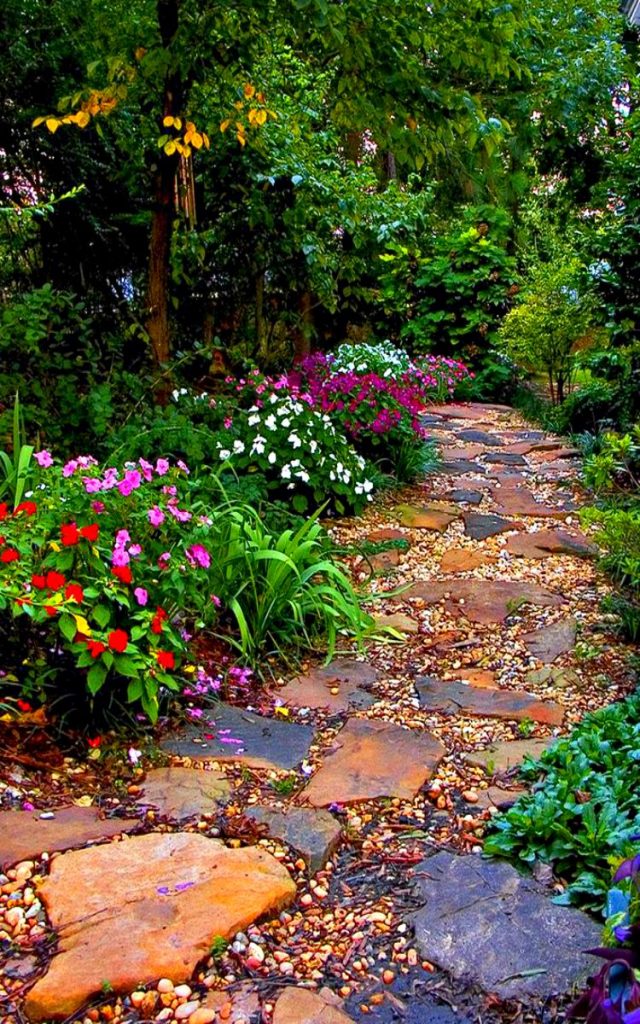
Source Image: topdreamer.com
In conclusion, designing garden pathways is both an art and a science, requiring careful consideration of materials, styles, and creative ideas. By understanding the role of pathways in garden design, exploring different materials and styles, and customizing pathways to suit your preferences, you can create beautiful, functional, and personalized pathways that enhance the beauty and enjoyment of your outdoor space. Whether you prefer formal elegance, informal charm, or rustic simplicity, there are endless possibilities for creating pathways that reflect your personality and vision for the garden. So roll up your sleeves, unleash your creativity, and embark on the journey of designing the perfect garden pathways for your outdoor oasis.

